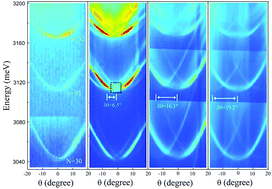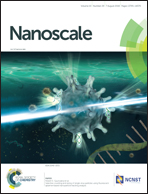Realization of an all-optically controlled dynamic superlattice for exciton–polaritons
Abstract
Exciton–polaritons, formed by the strong coupling between excitons and cavity-confined photons, are the building blocks of polaritonic devices. In this work, we report experimental realization of an all-optically controlled dynamic superlattice for polaritons working in the ultraviolet wavelength range at room temperature. The optical superlattice was realized on a one-dimensional (1D) ZnO microrod using an array of periodically arranged laser spots. Polaritonic mini-band features were clearly observed by both momentum- and real-space imaging spectroscopy. By controlling the periodicity of the laser spots, we demonstrated that the band structures of polaritons can be well controlled by external lasers. Theoretically, by extending the Kronig–Penney model to the polariton system, we calculated the polaritonic mini-bands and found it to be in good agreement with our experimental observations. By imaging the polariton flow in real space, the lifetime of polaritons and their relationship with their exitonic fractions were also extracted. The polaritonic superlattices demonstrated in this work are fully reconfigurable and optically controlled, and our results could thus stimulate the development of polaritonic all-optical devices.



 Please wait while we load your content...
Please wait while we load your content...